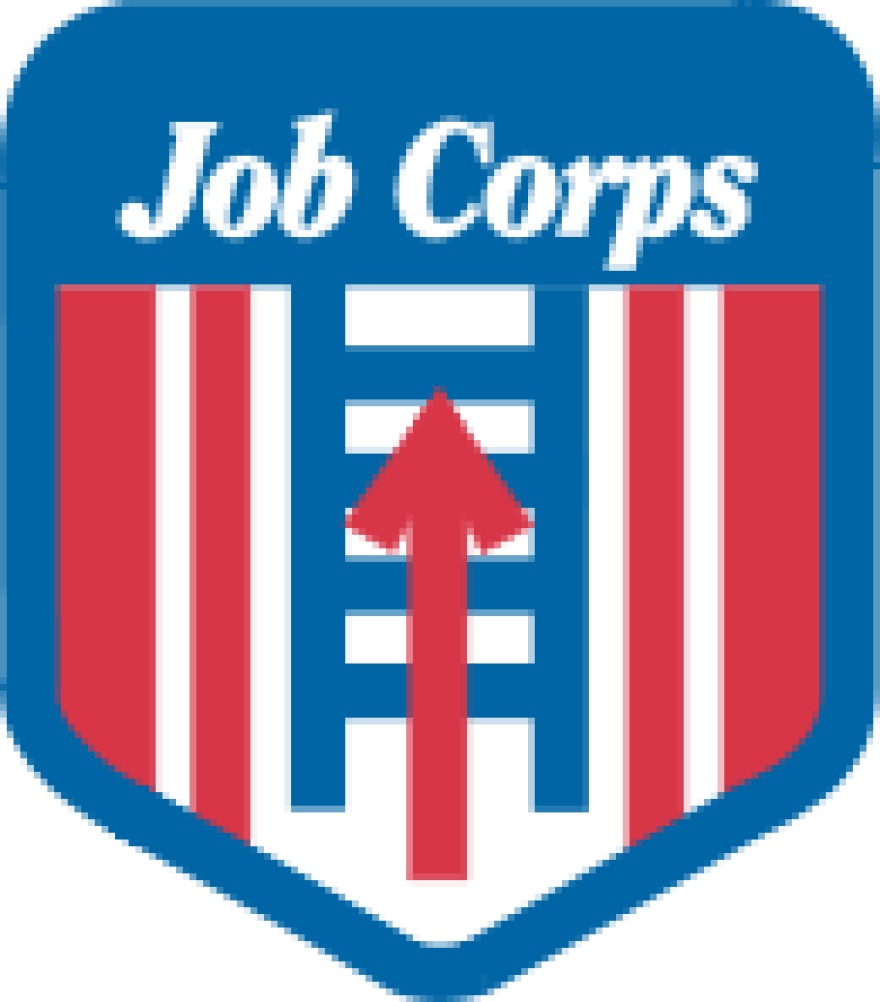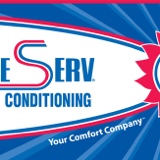Title Page
-
Audit Title
BM Checklist
-
Client / Site
-
Conducted on
-
Prepared by
Quality Assurance Check
Westfield Kotara Quality Assurance Checklist
-
Guards activities at time of inspection
Quality Assurance
-
Guard inspected
Appearance and dress
-
Jacket
-
Shirt
-
Tie
-
Shoes/Boots
-
Dark socks
-
Belt (correct colour)
-
Identification / Licence displayed correctly
-
Equipment worn correctly
-
Neatly shaven (Males)
-
Hair neat and tidy
-
Minimal jewellery
Equipment
-
Keys
-
Radios (signed and maintained)
-
Notebook and pen
Business Managers KPI Checklist
Business Managers KPI Checklist
-
Date and Time of check
-
Guards name
-
Uniform checked (note issues)
-
Notebook checked (Note issues)
-
MP5 carried
-
Code card
-
Hot alerts card
-
Use of force card
-
Bookmarks
-
Youth cards
Policy knowledge
-
SHOPLIFTING POLICY
- Offence must be seen by arresting officer and shown clear sign of leaving without paying
- If offence in tenant area have the tenant make the arrest and remain to prevent breach of peace -
SHOPLIFTING POLICY <br>
-
CUSTOMER SERVICE POLICY
- Be approachable, consider internal and external customers
- Understand telephone protocols. E.g.. "Welcome to Westfield this is john how can I help you..... Is there anything else I can help you with? Have a lovely day
Wait for the customer to hang up.
- provide assistance wherever possible, if you don't know the answer for the customer try to find out for them.
- We are able to assist customers to their vehicles with trolleys and try to assist people looking at directory boards
- ALWAYS SMILE!!! -
CUSTOMER SERVICE POLICY
-
EXCLUSION NOTICES POLICY
- Who can issue bans
- Centre specific particulars ( Boundaries, transport access )
- What are the lengths if bans and where can you find the information
- If POI refuses to sign the ban, does it still apply?
- Guard understands what needs to be provided to POI when the ban is issued. E.g.. Boundaries, reason, length etc. -
EXCLUSION NOTICES POLICY
-
PHOTOGRAPHY WITHIN WESTFIELD
- Video and stills are permitted
- Video and still are not permitted if they are annoying, endangering, threatening Westfield property e.g.. Stores, critical areas, staff members.
- Approach and question if they have permission, check with CM, if not ask to stop filming.
- Can't physically stop them, call in CM or Police at last resort -
PHOTOGRAPHY WITHIN WESTFIELD
-
NO CHASE AND LEAVING WESTFIELD PROPERTY
- Never run through the centre unless it is closed, safe to do so or Life is in danger.
- Do not leave Westfield property unless you have permission from DM. -
NO CHASE AND LEAVING WESTFIELD PROPERTY
-
BAG / BODY SEARCH POLICY
- Never place hands inside the bag
- Always request POI to remove items
- Not enforceable
- What are your alternatives? E.g.. Keep bag and POI at opposite ends on the room. -
BAG / BODY SEARCH POLICY <br>
Site Specific Procedures
-
Can you please run through the Incident Report Process<br><br>Security officers are required to make clear and comprehensive reports while on duty at Westfield Kotara. contemporaneous note books are supplied by Westfield for officers to use, each page is numbered and the notebook is stored for a period of up to 7 years after the date it was issued. It is important that these notebooks are kept in a clean condition and ruled off at the beginning and end of each shift. <br>These notebooks can be used in the event an officer is issued a subpoena to appear in court to give evidence relating to an incident, officers can use the contemporaneous notebook while on stand to recollect details of the incident so it is important to make notes clear and legible. <br><br>Any incident that requires a report to be written up should include as much detail as possible about:<br>*time incident took place<br>*who was involved <br>*What occurred in the incident <br>*Contributing factors<br>*Any witness<br>*witness statements <br><br>Incident Report -Slips, Trips and Falls<br><br>On arrival - ensure 'Full Duty of Care' is offered to customer. <br>Make observations of the incident scene and note any spillage/debris on floor, Customer's demeanour, conditions that could indicate contributing factors. Always attempt to locate independent witness. <br><br>Details required from injured customer <br><br>*Name<br>*Address<br>*Contact phone number <br><br>Observe and record the following details <br><br>*Approximate Age<br>*Footwear<br>*Height/Build <br>*Injuries Sustained<br>*Wearing Glasses<br>*Carrying Objects<br><br>Request statements from any witness of incident.if they are reluctant at least ask for their name and contact number.<br>Contact cleaning supervisor and request their attendance. <br>Photographs should be taken before spillage/debris (if any) is cleaned. Don't leave incident area -call someone to bring a camera up to you. <br>Any problems, such as a demanding injured customer etc, call the duty manager straight away, attend the incident. <br>Record in your notebook/report all details that you observe and/or heard. <br>This includes: <br>Location where you spoke to injured customer (at scene/over phone/CM etc),<br>How injured customer left scene (via wheelchair/walked away etc),<br>Any comments made (insurance/medical bills etc)<br>All statements, reports and photographs are to be completed before the end of the shift and details entered in the incident log.<br><br>Incident Reports - Security Incidents <br>On arrival, ensure 'Full Duty of Care" is offered to the customer or victim.<br>Make observations of the incident -any relevant facts observed such as damage, injury or any potential witness are able to be recorded <br>Complete details are to be taken from both victims/customers and from suspect if safe to do so (including current address).<br>Be sure of the facts - only report actual statements, observations and conversations that you are involved in.<br><br>Never Report Opinion or Assumptions <br>Complete the narrative. The full story must be told, include all of your actions and recommendations. (Who, What, When, Where, Why and How)<br>All details are to be recorded in your notebook. <br>An incident log entry is to be made for all incidents.<br>Significant incidents are to be immediately reported to the Risk & Security Manager or Duty Manager or by phone during trading hours and by email after hours.<br><br>Notebook Entries <br>All security officers will adopt the following procedures with respect to the correct use of their official notebook. <br>*Ensure that the notebook on issue to them has an identification number and that all pages are consecutively numbered. <br>*The security officer has signed the notebook register upon receipt of the notebook and the issuing officer witness register. <br>* The note book is only used for the official entries and not for personal information. <br>*Entries are always written in pen, not pencil or texta. <br>*Do not use liquid paper or similar or erase any part of the entry, nor should the entry ever be "scrubbed out" with pen. Any alterations should be made by ruling a single line through incorrect proton of the entry. <br>*At the commencements of each shift, an entry should be made outlining the shift details, location, fellow officers names, and any all sign allocated along with the details of any equipment that has been issue to you for your use.<br>*Each entry should be signed by the security officer and ruled off at the end of the operational days duties.<br>*Entries should be made in chronological order or reference indicators should be visible to refer back to the original incident page.<br><br>At the commencement of each and every shift The Day-Date-Rostered shift is to be written in the notebook. When attending a incident write the following:<br><br>*Time and Date, Location <br>*A short narrative of incident <br>*Full particulars of parties involved -name, address, phone number, D.O.B, description of clothing/footwear, description of distinguishing features, description of item in question including costs,etc....<br>*Document any conversation - in first person. <br>*Rule off, once entry is complete.<br>*Inside margin, place SAFEGUARD # as reference <br>*Leave a line between entries but DO NOT leave empty spaces in the notebook. <br>*Do Not use notebook as a scrap paper to jot use a spiral. <br>*Do Not use liquid paper to correct errors. draw a single line through the error and initial above.<br>*Have the Note Book Signed Off by the Security Supervisor or Business Manager Weekly. <br><br>Note; Note Books must remain in the security office when you are off duty. They must not be taken home.
-
What is a Code Green? Please explain the acronym.<br><br>A code green is a crime in progress meaning the offender is still in the store/area. It is essential that Security Officers attend immediately to assist.<br><br>Security Officers should not out themselves in danger; Security Officers should remember that MAYBO training provided by Scentre Group when approaching. <br><br>Safer <br>S stands for - Step Back <br>A stands for - Assess the Risk <br>F stands for - Find Help <br>E stands for - Evaluate<br>R stands for - Respond <br><br>Pops <br>P stands for - People <br>O stands for - Objects <br>P stands for - Place<br>S stands for - Situation <br><br>Security officer must remember :<br><br>That they are only there to assist the retailer; it is up to the victim to contact the police and to arrest the offender. <br><br>Never take over an arrest, if the retailer has apprehended an offender it is their duty to see it through until the police attend. <br><br>Security officers can ask an offender to open their bag but must never place their hands inside bags, if need be ask the offender to move objects out of the way instead. <br><br>If a minor is involved in the incident a parent/guardian must be contacted and asked to attend.
-
What is the CODE ORANGE - Evacuation ?<br><br>Evacuations may effect the entire centre or portions of a centre. An alternative to an evacuation is to shelter in place when an external evacuation could expose people to a greater level of danger, e.g. Severe weather. When sheltering in place, consider the safest locations not exposed to structural collapse or other risks.<br><br>In most instances during trade Security Officer will follow directions from Centre Management, but after trade hours most Senior Security Officer will take the role of Chief Warden until relieved by a Westfield Duty Manager so the following considerations must be made:<br><br>*Notify Westfield Duty Manager <br>*Ensure that the Security Supervisor and Access Group services manager have been notified. <br><br>Duty Manager/Chief Warden <br>> confirm with reporting party that all people have been removed from immediate danger. <br>> activate the Centre Evacuation Plan <br>>Notify all contractors listed as on site in the sign-in register or "No Wait" system to evacuate. <br>>Ensure relevant majors and neighbours are advised. <br>>Prior to leaving, Centre Management staff should obtain :<br>* Information on building services <br>* The Centre emergency "GO KIT" (if not possible, contact buddy Centre to sen GO KIT)<br>*Critical infrastructure shutdown plans<br>*Back up mobile phone batteries or charges <br>*Radios and back up radio batteries <br>*Consider diverting Centre phones to Buddy Centre. <br><br>>If possible, the Assembly Area should be near:<br><br>* Restrooms <br>* Protection from the elements <br>* Food and Beverage availability <br>* Separate from the general public and media<br>* Hard telephone lines<br>* Upwind of any smoke or other air contaminants <br>* Power outlets for mobile devices<br><br>> Assign available staff with radios and mobile phones to the evacuation assembly staging areas outside the Centre to exchange information between the people in the assembly areas and the EOC.<br><br>> Obtain chargers and extra batteries for Mobile phones, IPad, Laptop computers and radios.<br><br>> Refer to Re occupation Guidelines.<br><br>Emergency Evacuation <br><br>Situations that require an immediate evacuation of the affected area, using the EWIS System (external fires, active shooter etc). Evacuation may be to another nominated internal or external area, such as another floor, or place of refuge.<br><br>> Activate alarms to obtain attention, make PA announcements to evacuate and employ EWIS tones to obtain immediate compliance.<br><br>> If safe, have staff visit shops to ensure staff and customers have evacuated (most shops do not have Centre PA speakers) <br><br>> Lock entries but allow egress.<br><br>> Close car parks with pre-printed CARPARK CLOSED signs. Assign staff if available.<br><br>> Open car park exit barriers / boom gates to facilitate egress<br><br>> Switch the Centre Management phone yo a Buddy Centre. Provide the buddy centre with information to disclose and communications to forward to the incident Duty Manager<br><br>> it may not be possible for the buddy centre to handle the request from customers to help locate their family members and friends, if they become separated during the evacuation. This will be a task for the Centre staff in the EOC. <br><br>> Assign available staff with radios/ mobile phones to the evacuation assembly areas outside the Centre to exchange information between the assembly areas and the EOC.<br><br>> If safe , advise retailers to secure open tenancies, turn off gas, stove tops, cooking equipment and heat lamps, lock the cash register and take personal belongings with them, e.g. Car keys, house keys, wallets, handbags. <br><br>Incident Evacuations <br><br>Situations that require occupants to evacuate an area, but there is no time to take beneficial action and give directions to evacuees prior to leaving the Centre. <br><br>Examples; Power Shutdown/ outage, utility disruptions, noxious fumes, water damage, bomb threats and crime scenes. <br><br>> In "Incident Evacuations" Centre Management should use face-to-face communications AND the Public Address System to provide customers and retailers with information.<br><br>The message to retailers should include; <br><br>* Turn off gas, stove tops, cooking equipment and heat lamps<br>* Lock the cash register and the shop<br>* Take personal belongings<br>* Assemble in X area<br>* Do not call the security mobile number, except for emergencies.
Business Manager Audit Feb 2016 Managing Confrontation Static Guard Guidelines High Risk Incidents
-
Managing Confrontation <br><br>It shall be the responsibility of each security officer to ensure that all available steps are taken to handle complaints, aggressive or violent situations in a non-confrontational manner, displaying an awareness of the situation and respect for all persons involved, with the aim of resolving the situation peacefully. <br><br>Physical intervention or restraint should only be used as a last resort where the safety of any person, including the person of interest, is at risk of harm, and where such physical restraint is lawful. <br><br>
-
Static Guard Guidelines <br><br>Security guards engaged in static guard duty for contract work within hoarded tenancies will follow these instructions, where applicable:<br><br>*Once the worksite is opened - both the contractor and static guard will inspect the site for any existing damage. If damage is found, immediately inform the senior guard on duty. The senior guard will take photographs and submit a report. <br><br>*Static guards will ensure they remain alert and attentive to their duties. <br><br>*Static guards WILL NOT consume drinks, food or read newspapers, books etc while engaged on static guard duty. <br><br>*Static guards, if they require a comfort break, will ensure that a Centre guard assumes the static guard position in their absence. The absence will not be more than 10 minutes. Additional comfort breaks will be provided at the discretion of the senior guard. <br><br>*Static guard will be alert to any damage caused by contractors. If damage is caused, you will report this fact to the contractor and inform the senior guard who will record this damage in their notebook. An entry will also be made in the Security Incident Register. If necessary, seek assistance from a core guard to assist with photographs. <br><br>*If any work requires a permit example Hot Works etc- Ensure the contractors have the relevant permit. In the case of hot works, ensure the contractor remains on site for the required period on the permit to ensure work site safety. Ensure the contractor completes the 'Hot Works' permit in your presence. <br><br>*Ensure that any necessary alarms are isolated. <br><br>*Securely lock the hoarding prior to concluding that static shift.
-
High Risk Incidents <br><br>Access into Critical Infrastructure <br><br>Contractors at times may need access into the MDF Room to complete works. <br>NO CONTRACTORS OTHER THAN TELSTRA should be entering this room, unless access has been organised and approved by the Facilities Manager or Facilities Supervisor. <br><br>Sprinkler Valve Room<br>Access to fire control room or sprinkler valve room is approved for contractors working for AFP (Automatic Fire Protection) ONLY. Any other contractor who require access into the fire control room or sprinkler valve room must seek permission from the Facilities Manager or Facilities Supervisor. Any isolations to the pumps or sprinkler valves must be notified to the Facilities Manager and an isolation tag completed and placed on the valve and in Centre Management.<br><br>*Security is to report all access into the room to the Facilities Manager*<br><br>No access is to be granted to any contractor, Scentre Group employee into the High Voltage switch rooms. Only specialist High Voltage Switching contractors ( such as; Ausgrid Superintendents) are allowed access into these rooms. See annex urges for further details from memorandum. <br><br>Duress, Critical Plant Room & Other Alarm Pager Alert <br><br>All parents' rooms and toilet facilities at Red Lea have duress alarms installed; these are connect to the security site phone alarms, alarm monitoring and concierge.<br>Guards are to respond to alarms within the Centre including after-hours entry doors, fire doors, plant room & critical infrastructure via the use of alarm alert sent to the site phone that is connected to Insight Alarm System. All alarms are to be investigated via a physical check of the affected area by guards as well as the use of the CCTV. <br><br>Westfield Security and Customer Assistance Policies <br><br>Security personnel are reminded that their actions must comply with Westfield Security Procedures and Protocols. Should a security officer be unacquainted with a particular procedure or protocol that are to seek the advice of the security supervisor or/and Risk and Security Manager then guidance should be sought by referring to the current Westfield Security Staff Policies and Procedures that have been individually issued to all contract Centre staff. The original of this document is also located in the security office for easy reference. <br>
COMMENTS AND FEEDBACK
-
Guard to sign
-
Testing manager to sign











